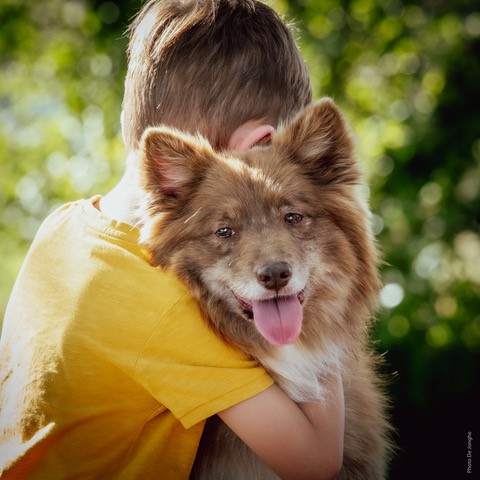Child-dog pairing in foster or institutional care: benefits and risks of a pilot project in France Child-dog pairing in foster or institutional care
Main Article Content
Abstract
A growing number of children live in foster or institutional care worldwide, compromising their health and social future. A child-dog pairing program is being considered by the National Health Commission of the French Federation of Adoptive Families (Enfance & Familles d’Adoption (EFA), Paris, France). Our hypothesis is that the presence of a companion animal allows the foster child to develop their resilience skills, and fosters a secure attachment profile. Potential stakeholders in such a project represent 3 axes: the child, represented by professionals in the field of childhood (i.e., childhood educators, psychologists, and medical and socio-medical staff); the animal, represented by professionals involved in care and education of animals (i.e., veterinarians, canine educators); and the institutions represented by professionals involved in administrative systems for foster children (i.e., administrative, legal, and educational officials). At this stage, the project considers hypothetical cases and not actual cases that professionals have experienced. A preliminary estimation of the benefits versus the risks of this project was sought by the EFA. To evaluate potential risks and benefits of a national pilot project for the placement of dogs in foster children in France. We questioned 59 stakeholders (±51.3 years of age) via a semi-open questionnaire to comment and evaluate on the risks and benefits of pairing foster children with dogs along 3 main axes: the child, the animal, and the institutions. The expected risks/benefits ratios were estimated by the respondents at 27/73, 32/68 and 39/61 for the respective axes of the child, the animal, and the institutions (p<0.05). The expected bond between children and animals was frequently predicted by the respondents. Bonding was characterized as free, reliable, stable, and unconditional. The education of both the child and animal was suggested as a priority goal. From the animal perspective, the negative potential effect cited, was the risk of mistreatment. From the institutions’ perspective, concordant and expansive sensibilities for each of the administrative and institutional professionals were expected. However, overloading the institutions in terms of work and cost was reported as highly likely. Finally, the quality of the dog as a mediator was predicted in both biological and foster families, for whom in-depth explanations and coaching were suggested as essential for the success of the project. Pairing dogs with foster children was estimated to cost 2.770 euros per year/pair. The current study confirms that the dog would be an obvious life partner for the foster child and that the current pilot project is desirable and feasible.
Downloads
Article Details

This work is licensed under a Creative Commons Attribution-NonCommercial-ShareAlike 4.0 International License.
Authors will be the copyright proprietor of their own work although they have accepted to use a creative common license, specifically CC-Attribution-NonComercial-ShareAlike_4.0

